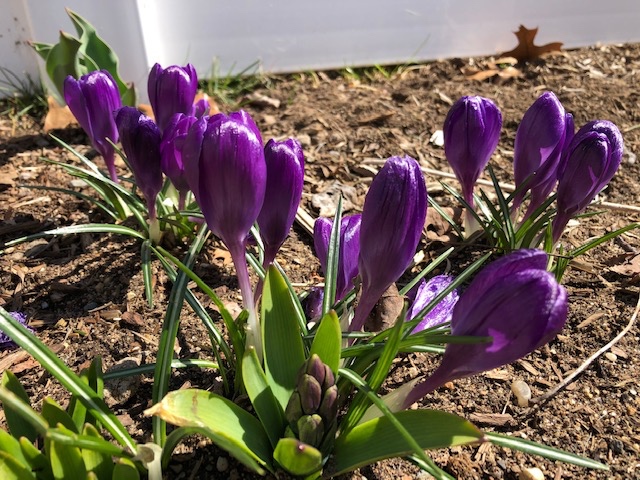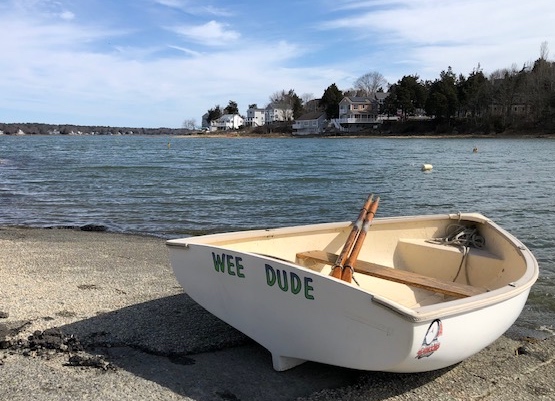A compassion multiplier

That hug from your partner or child never felt better—if you are fortunate enough to have either close by. A friend reaches you on the phone, her laughter breaking your isolation. Colleagues check in, a community scrambles for new ways to support the most vulnerable among us.
Our responses to this unprecedented time are vital and myriad. And also so fragile.
We’re moving at warp speed. Grinding through each day, absorbing fast-changing data and COVID-19 dissonance. Fearful for our elders, and for family members or friends on the front lines, whether doctors, nurses, and other practitioners scrambling for equipment and likely soon, ICU beds, or for those working at nursing homes and grocery stores.
We seek glimmers of hope—tempered by a new reality, if not sliced apart raw.
Will our response be enough, and where will it lead?
The vitality of our interconnectedness has never been more magnified.
Two things seem clear to me. The first is a resurgence of gratitude amidst the uncertainty. Being able to look into my wife’s eyes each morning to express we will navigate this together. Knowing our children and their partners appear to be safe—each making good decisions, well informed, rather than wasted in denial or distractions. And having gratitude for the decent people connected with our nonprofit who are already finding creative ways to reach families feeling additional stress.
Can this gratitude grow exponentially? I don’t mean that naively, as if it’s a salve, and we should downplay the modeling of this virus by epidemiologists, the economic devastation just beginning to ripple out, or ignore the distancing directives.
Nor ignore a shudder and tear when it hits us how long it may before we can be with a loved one again.
We are truly in unchartered waters. So let’s try to man the oars with grace—reaching out to others wherever we can. Thankfully, so many people in our circles are already doing this—more on that in a moment.
Which leads to the second thing I see emerging: a reassertion of our interdependence. Humanity showing its best face.
There is an emerging dynamic: as we turn inward following the guidance of social distancing, self-isolating, or even sheltering-in-place, the primacy of our interconnectedness has never been more magnified. Forced inward, we are stripped to the core. The greatest self-fulfillment and lasting meaning comes when we step outside of ourselves.
All this is occurring despite the rifts of tribalism, our repellent, nativist impulses, and a narcissist-in-chief for the times.
The root questions going forward may be: how do we stay connected? How will we support loved ones who are not physically with us, and those people and communities we care about?
Almost everyone I talk to seems assured we will get through this. Eventually, yes. But what will that look like?
Those fears are real and ratcheting. Yet let’s also consider how small acts of kindness ripple out—someone tipping a waitress now out of work or doing take-out, or pre-paying a yoga instructor whose classes are closed. Combine these small actions with our ingenuity, an entrepreneur’s drive to create new tools for outreach and education, for example. Perhaps a sort of compassion multiplier is already emerging.
Think of how someone stuck alone is brought to a smile as you connect by phone, a thoughtful card, on Skype or some other means. Even without your hands clasped. Without seeing the strain and lament and thankfulness in her eyes up close. Yes, there are limits to this. I think of a dear friend of my father’s (and our entire family) who lives alone, now quarantined in an assisted living facility. Her daughter can only visit through the window, and fortunately her mother is on the first floor. My heart goes out to each of them.
Surely, our neighbors and friends will create new ways to connect, some built on timeworn practices. On a grand scale, meeting the challenge of this age is perhaps akin to the commitment and sacrifice the greatest generation made during World War II.
Author and columnist David Brooks makes a compelling case for this social solidarity, as he calls it.
Whereas “social connection means feeling empathetic toward others and being kind,” solidarity “is more tenacious,” he writes. “It’s an active commitment to the common good—the kind of thing needed in times like now.”
I want to believe we can do this. A tenacious solidarity.
Another response, another angle, comes from a men’s group I help facilitate. Seven or eight fathers like myself who have lost a child gather every two weeks upstairs at Hope Floats Healing & Wellness Center, a bereavement center my wife and I started in 2008. The last time we met in person, a night before a national emergency was declared over the coronavirus, we talked about what was coming.
Some of the men downplayed it—not ignoring the pandemic, but knowing the relativity of how we experience it. We have a different perspective, having already been through perhaps the worse thing life can serve up: losing a child, for most of us catastrophically. “If I can make it through that, I can survive anything” was the shared mantra.
Entering this new reality, I found myself wanting to break from the news cycle and heightened risks during the weekend. I decided to got out and row.
We have an eight-foot dinghy, a sturdy Puffin built in Maine. She’s well balanced and handles charging into minor swells. I took off from a small harbor where we live.
I rowed hard to the wind into the bay. Went easy for stretches returning along salt marsh in the lee. Taking deep breaths, inhaling the salt air. Trying to become one with the water even for a few minutes Met a small great blue heron in a side channel, and watched its flight.
We’re yearning for solidarity and connection. We have to keep trying.
How do we stay connected?

